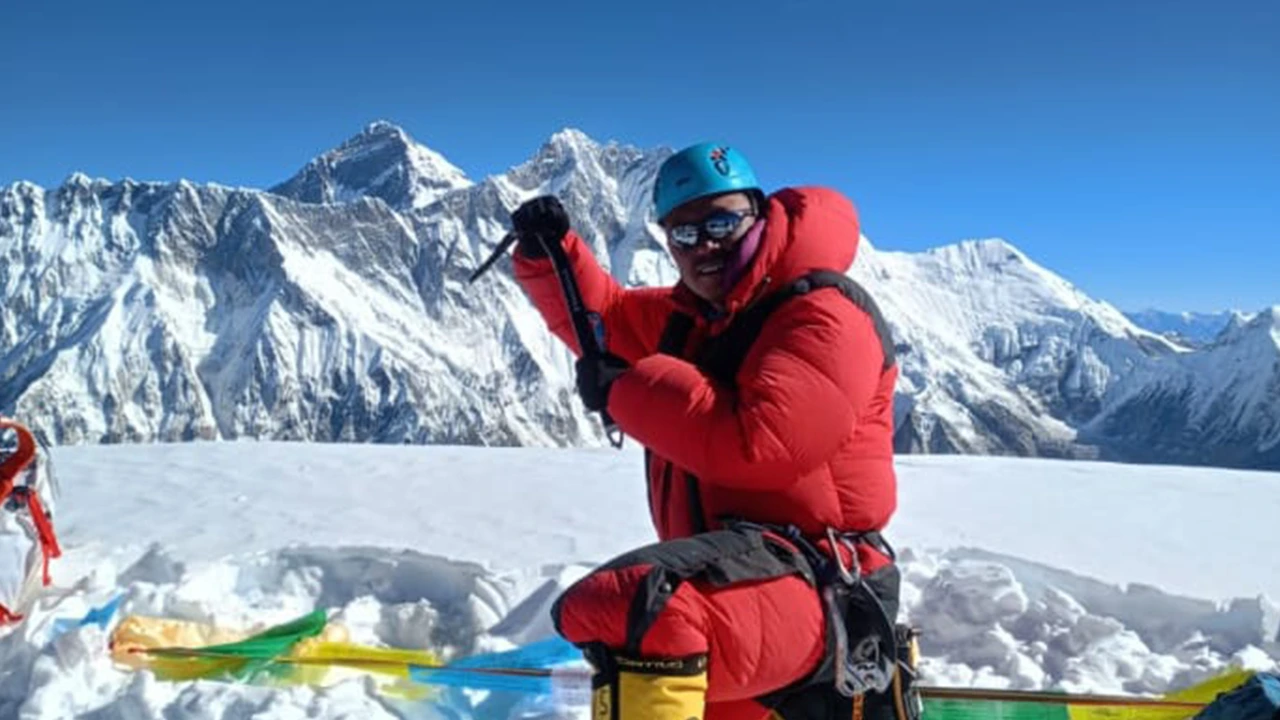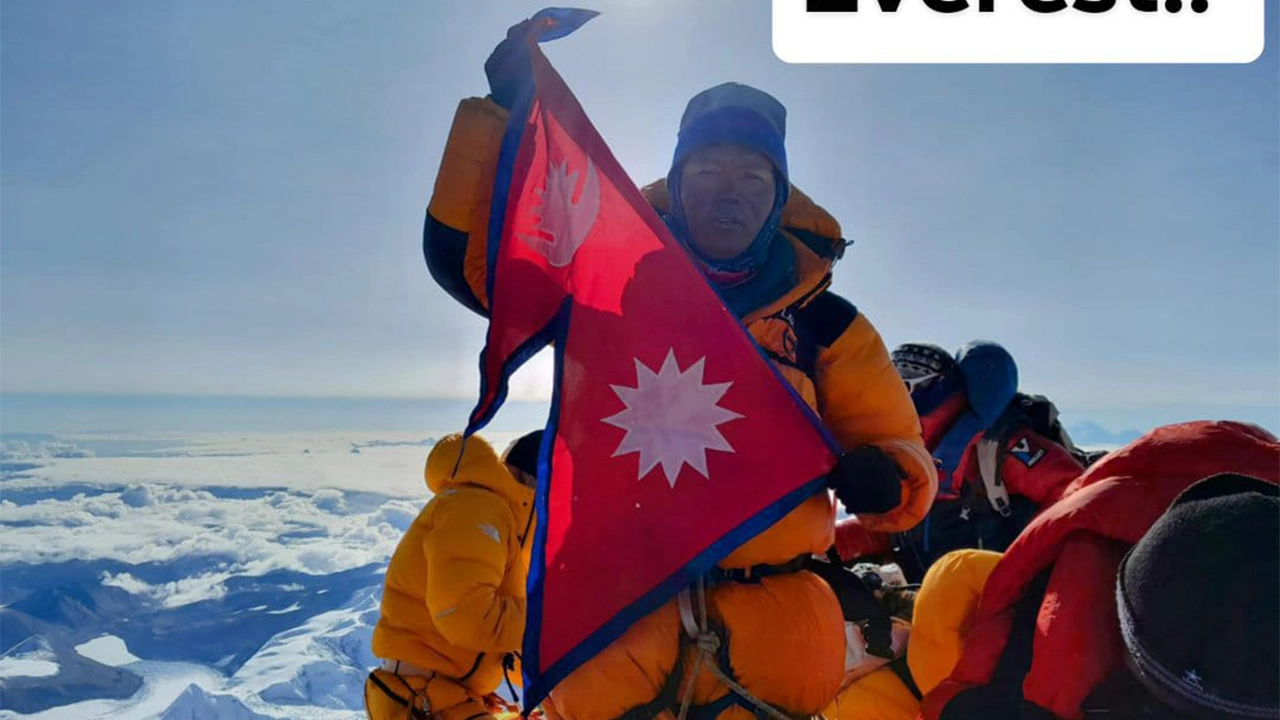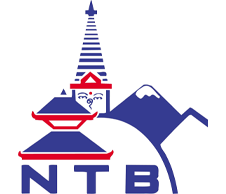You arrive at Tribhuvan International Airport in Kathmandu, where our representative greets you and escorts you to your hotel. Kathmandu, the capital of Nepal, blends ancient culture with modern vibrancy. After checking in, the rest of the day is free for rest or a short walk around the lively Thamel area, where shops and cafes bustle with trekkers preparing for their journeys. In the evening, you can enjoy your first Nepali dinner and relax at the hotel. Overnight in Kathmandu.
Amadablam Expedition

Overview
The Ama Dablam Expedition (28 Days) is one of the most sought-after mountaineering adventures in Nepal, often described as the Matterhorn of the Himalayas for its striking pyramid-shaped peak. Standing at 6,812 meters (22,349 ft), Ama Dablam offers a technically challenging yet achievable climb for experienced mountaineers, blending ice, rock, and mixed climbing with breathtaking views of Everest, Lhotse, Makalu, and Cho Oyu.
This 28-day Ama Dablam Expedition is designed to give climbers the right balance of trekking, acclimatization, and technical preparation before making the summit push. The journey begins with a scenic flight to Lukla followed by a trek through iconic Sherpa villages like Namche Bazaar, Tengboche, and Pangboche, where climbers experience the unique Sherpa culture, ancient monasteries, and spiritual blessings that have guided Himalayan expeditions for decades.
Why Choose the Ama Dablam Expedition?
Unlike Everest or other 8,000-meter peaks, Ama Dablam is not about extreme altitude alone it’s about technical skills, precision, and alpine-style climbing. The expedition requires rock climbing, ice climbing, fixed rope use, and exposure to mixed terrains, making it a training ground for future Himalayan expeditions. Despite its challenges, it is considered a more accessible expedition for climbers with prior high-altitude and technical experience.
The climbing route typically follows the Southwest Ridge, known for its technical pitches, exposed ridges, and steep ice sections, all of which make Ama Dablam one of the most rewarding climbs in the world. From high camps, climbers enjoy panoramic Himalayan views, including the Everest massif and the Khumbu Valley below.
Expedition Itinerary at a Glance
The 28-day Ama Dablam Expedition begins with acclimatization treks in the Khumbu region before moving to Base Camp at 4,600m. Rotations to higher camps allow climbers to adjust to altitude while practicing rope work and technical climbing techniques. The summit push typically takes place after establishing Camp I (5,700m), Camp II (6,000m), and Camp III (6,300m), with the final ascent reaching the summit at 6,812m.
The descent follows the same route back to Base Camp, with ample time for recovery before retracing the trek to Lukla and flying back to Kathmandu.
Cultural and Scenic Highlights
Beyond the climb itself, the expedition is a cultural and scenic journey. The trek to Base Camp passes through Sagarmatha National Park, a UNESCO World Heritage Site, where climbers may spot Himalayan wildlife such as musk deer, snow leopards, and colorful pheasants. Visiting Tengboche Monastery, one of the most spiritual centers in the Khumbu, provides blessings from Buddhist monks—a ritual followed by many climbers before facing the mountain.
Evenings in Namche Bazaar offer a taste of local Sherpa hospitality, with vibrant tea houses, bakeries, and mountain lodges providing comfort amidst the wilderness.
Who is Ama Dablam For?
The Ama Dablam Expedition (28 Days) is ideal for climbers who:
- Have previous experience in high-altitude climbing (above 6,000m).
- Possess technical knowledge of rope handling, crampons, ice axes, and fixed rope climbing.
- Are physically and mentally prepared for long, demanding days on steep rock and ice.
It is often seen as a stepping stone for future 8,000-meter expeditions, including Everest, Lhotse, and Makalu, due to its technical difficulty and alpine exposure.
Why Ama Dablam is Special
Ama Dablam is more than just a mountain—it is a symbol of the Khumbu region, its name meaning “Mother’s Necklace,” inspired by the glacier hanging from the peak like a pendant. For climbers, it offers not only world-class technical challenges but also cultural immersion in Sherpa traditions, a spiritual connection with the Himalayas, and the pride of summiting one of the world’s most iconic peaks.
Ama Dablam Expedition 28 Days | Major Highlights
- Summit Ama Dablam (6,812m) via the Southwest Ridge.
- Trek through Khumbu region, passing Namche Bazaar, Tengboche, Pangboche, and other Sherpa villages.
- Explore Sagarmatha National Park, a UNESCO World Heritage Site.
- Witness panoramic views of Everest, Lhotse, Nuptse, Makalu, and Cho Oyu.
- Acclimatization climbs at Camp I, II, III with technical training.
- Visit Tengboche Monastery and experience Sherpa culture.
- Wildlife spotting including Himalayan snow leopards, musk deer, and pheasants.
- Stay in base camp and high-altitude camps, with full support from experienced guides and Sherpa team.
This day is dedicated to official preparations for the expedition. You will attend briefings at the Department of Tourism, where climbing regulations and safety measures are explained. Your guide will help finalize gear checks and ensure that any missing items can be purchased in Kathmandu’s trekking shops. If time allows, you may also visit cultural landmarks such as Boudhanath Stupa or Pashupatinath Temple. Overnight at your hotel, enjoying hearty meals before the adventure begins.
A short but thrilling mountain flight takes you from Kathmandu to Lukla, one of the world’s most adventurous airports. After organizing loads with porters, you begin your trek along the Dudh Koshi River. The trail passes through pine forests, suspension bridges adorned with prayer flags, and small Sherpa villages. You arrive in Phakding after a gentle walk, where a warm welcome at your lodge awaits. Overnight in a mountain lodge with traditional Sherpa meals.
(Start: 1,350m / 4,430ft → End: 2,650m / 8,694ft | Max: 2,860m / 9,383ft | Duration: 4 hrs | ↑200m / ↓–)
Following the Dudh Koshi River, you cross several suspension bridges, including the iconic Hillary Bridge. The final ascent to Namche is steep and challenging but rewards you with breathtaking views. Namche Bazaar, the heart of the Khumbu region, offers vibrant markets, bakeries, and views of surrounding peaks like Thamserku. This lively Sherpa town is where trekkers and climbers gather before their expeditions. Overnight in a comfortable lodge.
(Start: 2,650m / 8,694ft → End: 3,440m / 11,286ft | Max: 3,440m / 11,286ft | Duration: 6 hrs | ↑790m / ↓–)
To aid acclimatization, you hike to the Everest View Hotel, offering one of the earliest panoramic glimpses of Everest, Ama Dablam, and Lhotse. On the way back, you can visit the Hillary Museum and Sherpa Cultural Center, learning about mountaineering history and Sherpa life. In the evening, attend a slideshow program about Everest expeditions at Namche. Overnight at the lodge, enjoying hearty meals in the dining hall.
Bazaar (Start: 3,440m / 11,286ft → End: 3,440m / 11,286ft | Max: 3,800m / 12,467ft | Duration: 3 hrs hike | ↑360m / ↓360m)
The trail gently winds along the valley with magnificent views of Everest and Ama Dablam. After a descent to the river, you climb steadily through pine forests to reach Tengboche. This serene village is home to the famous Tengboche Monastery, where monks perform daily prayers. The monastery courtyard provides an unforgettable view of Ama Dablam glowing at sunset. Overnight at a nearby lodge.
(Start: 3,440m / 11,286ft → End: 3,860m / 12,631ft | Max: 3,860m / 12,631ft | Duration: 5–6 hrs | ↑420m / ↓–)
Today you leave the main Everest trail and head toward Ama Dablam Base Camp. The path descends slightly before climbing steeply into open alpine meadows. As you approach, Ama Dablam dominates the skyline, its pyramid shape inspiring awe. Base camp is set on a grassy plain at 4,600m, with sweeping views of surrounding peaks. Here, tents are prepared for your expedition, and the climbing team begins final preparations. Overnight in expedition tents.
(Start: 3,860m / 12,631ft → End: 4,600m / 15,091ft | Max: 4,600m / 15,091ft | Duration: 5 hrs | ↑740m / ↓–)
This period is dedicated to the climbing phase of Ama Dablam. After acclimatization and training on fixed ropes, you establish higher camps:
- Camp I (5,700m): A challenging ascent on rocky ridges.
- Camp II (6,000m): Known as the “Yellow Tower,” this technical section involves steep rock climbing.
- Camp III (6,300m): Located just below the Dablam (the hanging glacier).
- From Camp III, the summit push begins, climbing steep snow slopes to the breathtaking summit of Ama Dablam at 6,812m. The panoramic view includes Everest, Lhotse, Makalu, and the entire Khumbu range. After reaching the summit, you descend carefully back to base camp for rest and celebration.
Dablam (Start: 4,600m / 15,091ft → End: 6,812m / 22,334ft | Max: 6,812m / 22,334ft | Duration: 16 days | ↑2,212m / ↓2,212m)
After dismantling base camp, you trek back toward Namche Bazaar. The descent feels easier with more oxygen in the air. Back in Namche, you can enjoy bakeries, hot showers, and comfortable lodges. It is a joyful return to civilization after weeks in the high mountains. Overnight at a lodge.
(Start: 4,600m / 15,091ft → End: 3,860m / 12,631ft | Max: 4,600m / 15,091ft | Duration: 4 hrs | ↑0m / ↓740m)
Retracing your steps, you descend along the Dudh Koshi River, passing suspension bridges, prayer wheels, and small Sherpa villages. The trail eventually climbs gently back into Lukla. Here you celebrate with your Sherpa team and fellow climbers, marking the successful completion of your Ama Dablam expedition. Overnight at a Lukla lodge.
(Start: 3,440m / 11,286ft → End: 2,840m / 9,317ft | Max: 3,440m / 11,286ft | Duration: 7 hrs | ↑0m / ↓600m)
An early-morning mountain flight brings you back to Kathmandu. From the plane, you may catch one last glimpse of Everest and Ama Dablam. On arrival, you are transferred to your hotel. The rest of the day is free for relaxation, spa visits, or city exploration. Overnight at a comfortable hotel.
This buffer day accounts for possible Lukla flight delays. If flights are on schedule, you can spend the day sightseeing or shopping. Popular options include visiting Patan Durbar Square, Swayambhunath (Monkey Temple), or simply enjoying the cafés of Thamel. In the evening, a farewell dinner with cultural dances celebrates the success of your expedition. Overnight in Kathmandu.
(Start: 1,350m / 4,430ft → End: 1,350m / 4,430ft | Duration: – hrs | ↑0m / ↓0m)
After breakfast, our representative transfers you to Tribhuvan International Airport for your final departure. You leave Nepal with lifelong memories of Ama Dablam’s dramatic summit and the warm hospitality of the Sherpa people.
Cost Includes
- Airport transfers in Kathmandu.
- Domestic flights (Kathmandu–Lukla–Kathmandu).
- Accommodations: 4-star hotels in Kathmandu and tea houses/lodges during trek.
- Full board meals during trek (breakfast, lunch, and dinner).
- Experienced mountaineering guides and Sherpa support.
- Climbing permits and Sagarmatha National Park entry fees.
- Oxygen support and high-altitude medical kit.
- Trekking and climbing equipment (fixed ropes, ladders, tents, kitchen equipment).
- Cultural experiences in Sherpa villages and monasteries.
Cost Excludes
- International airfare to/from Nepal.
- Personal climbing gear (boots, harness, crampons, ice axe, helmet, etc.).
- Travel insurance (high-altitude trekking & climbing coverage required).
- Tips for guides, porters, and staff.
- Meals in Kathmandu outside of hotels.
- Optional sightseeing or activities not mentioned in the itinerary.
FAQs
The best climbing seasons are pre-monsoon (March–May) and post-monsoon (September–November). During these periods, the weather is more stable, skies are clear, and temperatures are ideal for climbing. Summer months (June–August) are less favorable due to heavy rainfall and avalanche risk.
Ama Dablam is a technically challenging peak. Climbers must have prior high-altitude experience and be skilled in ice climbing, rock climbing, and fixed rope techniques. The expedition involves steep ridges, glacier travel, and exposure to wind and cold.
Climbing Ama Dablam without a certified guide is not recommended. The mountain is technically demanding, and a professional Sherpa guide ensures safety, route knowledge, and logistic support.
High cardiovascular endurance, strength, and experience in alpine climbing are essential. Climbers should be comfortable trekking for 6–8 hours per day at altitudes above 5,000 meters.
Yes, the itinerary includes rotational climbs to higher camps (Camp I, II, III), along with rest days in Namche Bazaar and Base Camp to adjust to high altitude and minimize risks of Acute Mountain Sickness (AMS).
Essential climbing gear includes:
- Mountaineering boots compatible with crampons
- Ice axe and crampons
- Climbing harness, helmet, and carabiners
- Cold-weather clothing and gloves
- Sunglasses and sunscreen
- Sleeping bag rated for extreme cold
Yes, climbers should have prior experience on technical Himalayan peaks or equivalent rock/ice climbs above 5,000–6,000 meters. Ama Dablam is not suitable for beginners.
Full-board meals are provided during trekking and climbing, prepared by the expedition kitchen staff. Meals include Nepali, continental, and high-calorie mountaineering dishes.
The expedition includes experienced guides, high-altitude medical kits, oxygen support, and fixed ropes. All climbers receive briefings on route hazards, crevasses, and weather conditions.
Yes, many climbers combine Ama Dablam with Island Peak or Mera Peak before or after, using it as a training climb for Everest or other 8,000m peaks.
Amadablam Expedition
Trekking & Hiking Adventure




